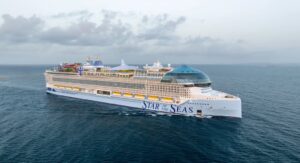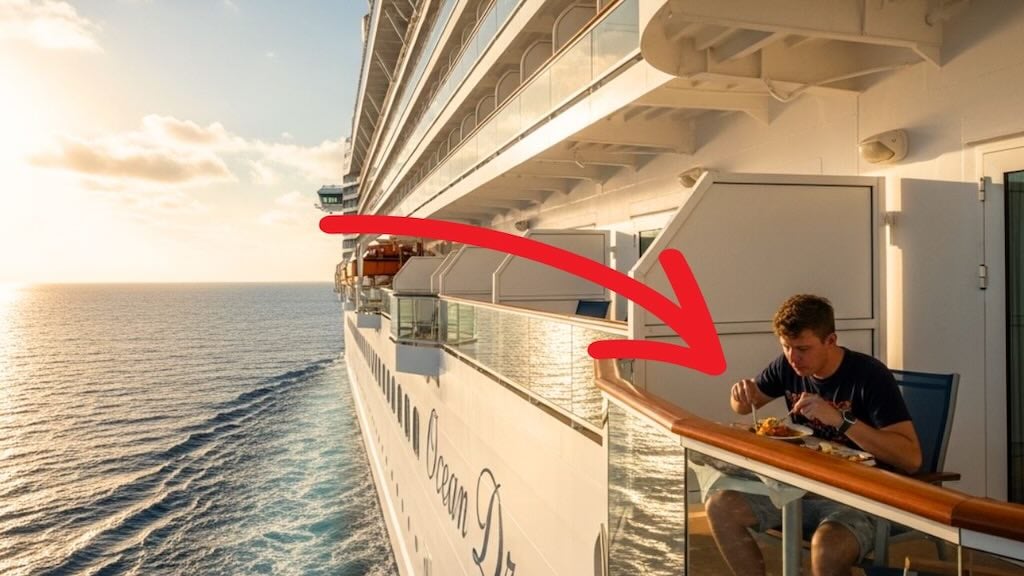When it comes to epic cruise ship battles, few are as fascinating as Symphony of the Seas vs Titanic. Over a century apart, both ships were celebrated as the largest and most advanced of their time. While Titanic symbolized early 20th-century luxury, Symphony of the Seas redefines modern cruising. This isn’t just a size match-up — it’s a huge comparison that reveals how far cruise travel has evolved. If you’re curious about another modern showdown, check out our guide on Star of the Seas vs Titanic.
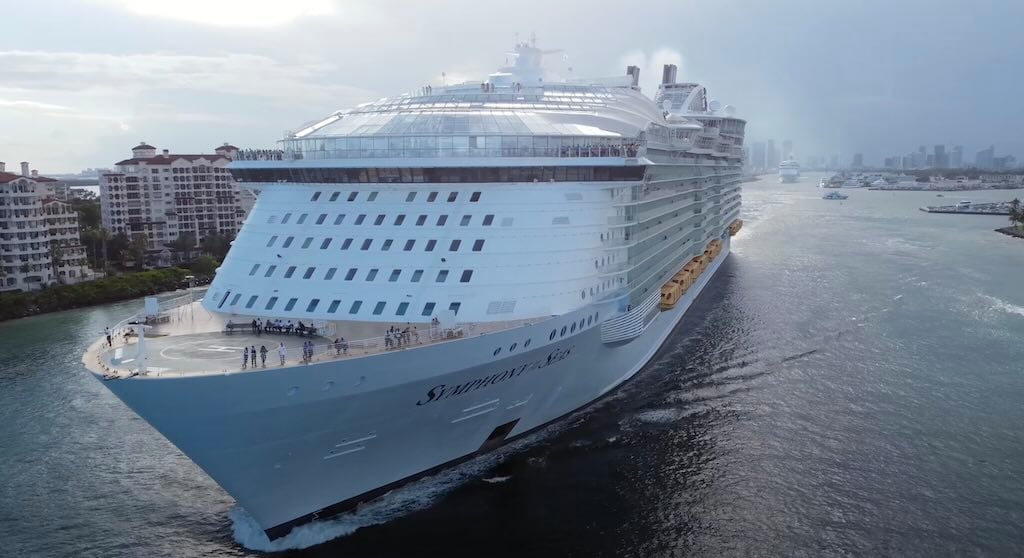
In this article, we’ll dive into a side-by-side breakdown of Symphony of the Seas vs Titanic, covering cost, passenger capacity, onboard amenities, ticket prices, and safety features. By the end, you’ll clearly see how each ship left its mark on history — and why today’s cruise ships deliver an experience Titanic could only dream of.
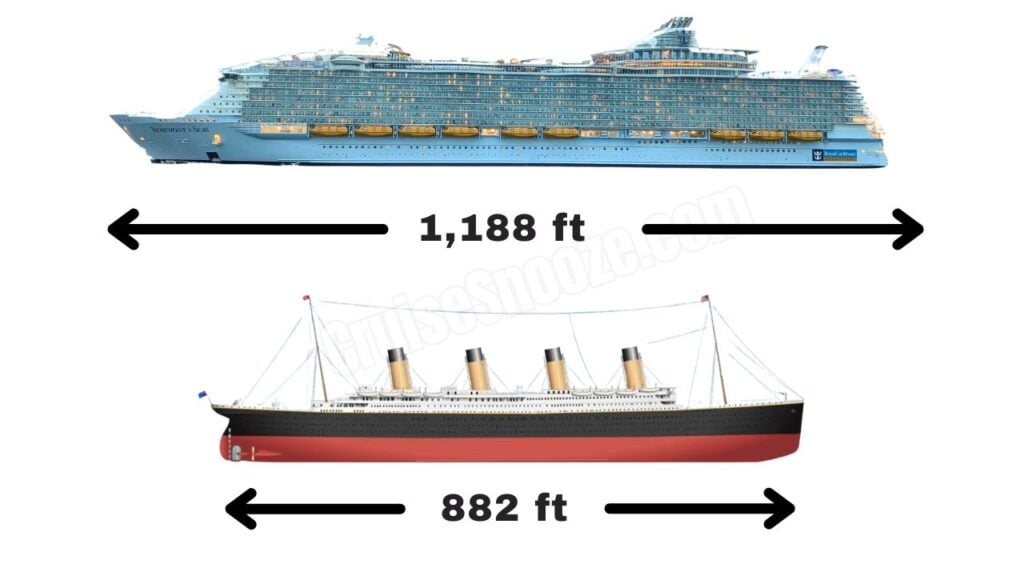
Table of Contents
Symphony of the Seas vs Titanic – Quick Overview
At first glance, Symphony of the Seas vs Titanic may feel like comparing apples to oranges, but both ships share one key trait — they were each the largest ship in the world when they debuted.
- Titanic (1912): An ocean liner built for luxury and prestige, stretching 822 feet long with a gross tonnage of 46,328 GT.
- Symphony of the Seas (2018): A modern mega cruise ship measuring 1,188 feet with an astonishing 228,081 GT.
While Titanic was seen as the pinnacle of luxury in her era, Symphony of the Seas takes things to an entirely different level with massive passenger capacity, resort-style amenities, and cutting-edge safety systems.
In short, Titanic was the pride of the early 1900s, while Symphony of the Seas represents the future of cruising.
Cost to Build and Launch Dates
When comparing Symphony of the Seas vs Titanic, one of the most striking contrasts is the cost to build each ship.
- Titanic (1912): Built for about $7.5 million at the time, which equals roughly $198 million when adjusted for today’s inflation. The ship took just over three years to construct at the Harland & Wolff shipyard in Belfast, Northern Ireland. For more historical details, see Encyclopedia Britannica’s Titanic entry. Her tragic maiden voyage began on April 10, 1912.
- Symphony of the Seas (2018): Carried a staggering price tag of $1.35 billion, more than six times the inflation-adjusted cost of Titanic. Constructed at the Chantiers de l’Atlantique shipyard in Saint-Nazaire, France, she launched in April 2018 after nearly three years of work.
What’s fascinating is that despite the century gap, the build time for Symphony of the Seas and Titanic was almost identical. The big difference lies in the scale, materials, and technology — showing just how far shipbuilding has advanced.
Size Comparison
One of the biggest talking points in Symphony of the Seas vs Titanic is just how massive modern cruise ships have become compared to early ocean liners.
Titanic (1912):
- Length: 822 feet
- Width (Beam): 92.5 feet
- Height: 175 feet
- Gross Tonnage: 46,328 GT
Symphony of the Seas (2018):
- Length: 1,188 feet
- Width (Beam): 215.5 feet
- Height: 238 feet
- Gross Tonnage: 228,081 GT
To put it simply, Symphony of the Seas is over four times larger in volume than Titanic. The difference is so great that Titanic could almost fit inside Symphony of the Seas, with plenty of room left over.
This huge comparison shows how advances in engineering and design have allowed ships to grow from majestic liners to floating cities.
Passenger and Crew Capacities
Another key difference in Symphony of the Seas vs Titanic is the sheer number of people each ship could carry. Passenger comfort and crew requirements have changed drastically in the past century.
Titanic (1912):
- Maximum Passengers: 2,435
- Crew Members: 892
- Passenger Cabins: 840
- Decks: 10
Symphony of the Seas (2018):
- Maximum Passengers: 6,680
- Crew Members: 2,200
- Passenger Cabins: 2,759
- Decks: 17 (16 open to guests)
While Titanic was a true behemoth of her time, Symphony of the Seas dwarfs her in both passenger capacity and crew size. Modern mega-ships are designed to operate like floating resorts, offering everything from dozens of restaurants to entertainment venues, which naturally requires far more staff.
Passenger Accommodations
When looking at Symphony of the Seas vs Titanic, the style of accommodations reveals just how much cruising has evolved.
Titanic (1912):
- First-class passengers enjoyed lavish suites with private sitting rooms, ornate wood décor, and even faux fireplaces.
- Second-class cabins were comfortable and stylish, with mahogany furniture and oak paneling that rivaled hotels of the day.
- Third-class cabins, while basic, were still better than most steerage accommodations on other ships of the era.
Symphony of the Seas (2018):
- Offers everything from budget-friendly interior staterooms to ocean-view and balcony cabins.
- Features the Ultimate Family Suite — a two-story mega suite with a slide, game room, and private Jacuzzi.
- Royal Suite Class accommodations deliver luxury at a resort level, with priority services and exclusive amenities.
The accommodations on Titanic reflected the class divisions of early 1900s travel, while Symphony of the Seas focuses on variety and inclusivity, offering options for families, luxury seekers, and budget cruisers alike.
Onboard Amenities and Passenger Experience
If there’s one area where Symphony of the Seas vs Titanic shows the biggest leap forward, it’s in onboard amenities. What passengers once considered groundbreaking now feels modest compared to today’s mega-ships.
Titanic (1912):
- A heated swimming pool, Turkish baths, and a squash court for recreation.
- A fully equipped gymnasium with rowers, bikes, and even electric animals (yes, really!).
- Elegant dining rooms, a Parisian-style café, and luxurious smoking lounges.
- Live music from the ship’s orchestra to entertain first-class guests.
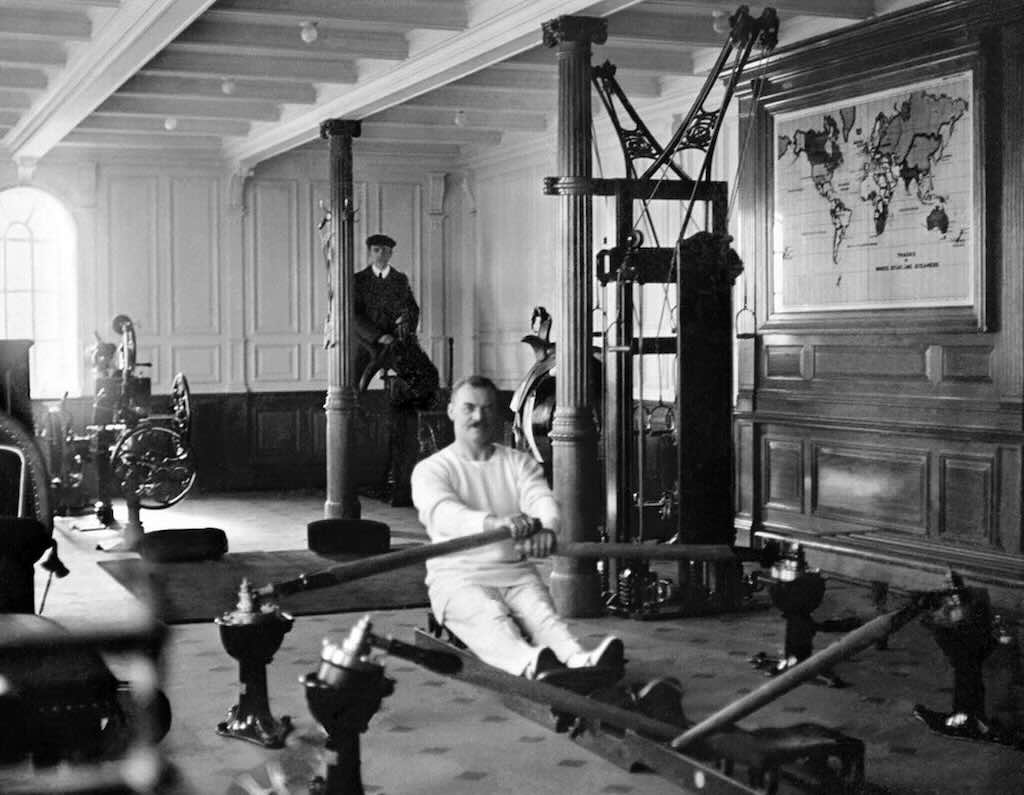
Symphony of the Seas (2018):
- Multiple pools and whirlpools, plus a full water park with thrilling slides.
- The FlowRider surf simulator, rock-climbing walls, ice-skating rink, laser tag, and even a zip line.
- Over 20 dining venues, from complimentary buffets to specialty restaurants serving sushi, steak, and seafood.
- Broadway-style productions, aqua theater shows, karaoke bars, and nightlife that rivals any land-based resort.

What Titanic offered was considered luxurious innovation in 1912, but Symphony of the Seas delivers a theme-park-at-sea experience that keeps thousands of passengers entertained around the clock.
Ticket Prices Then vs Now
One fascinating angle of Symphony of the Seas vs Titanic is how much it cost to sail on each ship — and how those prices compare when adjusted for today.
Titanic (1912):
- First-class suites: £30 to £870 (about $4,350 to $126,000 today).
- Second-class cabins: Around $1,750 to $4,350 in modern value.
- Third-class tickets: Roughly $435 to $5,220 in today’s money.
Symphony of the Seas (2018):
- Interior staterooms: Can start as low as $1,500 per person.
- Balcony cabins: Average around $2,500 to $4,000, depending on itinerary.
- Ultimate Family Suite: Luxury pricing up to $85,000 for a weeklong sailing.
What’s surprising is that while Symphony of the Seas is far more advanced, ticket prices are more affordable on average compared to Titanic’s inflation-adjusted costs. Cruising has shifted from an elite luxury experience to one that’s accessible to a wider audience.

Safety Features
Perhaps the most important difference in Symphony of the Seas vs Titanic lies in safety. The tragedy of 1912 forever changed maritime laws, and today’s cruise ships are designed with multiple fail-safes.
Titanic (1912):
- Carried 20 lifeboats, enough for just over half the people onboard.
- Featured watertight compartments, but they weren’t fully sealed at the top.
- Relied on early 20th-century navigation technology, leaving little margin for error. Learn more about the tragedy and its legacy in our guide on where the Titanic sank.
Symphony of the Seas (2018):
- Equipped with modern radar, GPS, and advanced navigation systems.
- Has more than enough lifeboats and life jackets for every passenger and crew member.
- Features fire suppression systems, watertight doors, and redundant propulsion systems for backup power.
- Strict international safety standards (SOLAS) ensure regular inspections and drills.
Where Titanic’s safety reflected the limitations of its era, Symphony of the Seas demonstrates how modern cruise ships are built to handle emergencies with layered protections and advanced technology.
Symphony of the Seas vs Titanic FAQs
Why is Symphony of the Seas considered better than Titanic?
Symphony of the Seas is vastly larger, safer, and more advanced. While Titanic was revolutionary in 1912, Symphony offers state-of-the-art technology, modern safety systems, and endless amenities that make it a true floating resort.
Are modern cruise ships safer than Titanic?
Yes. After the Titanic disaster, strict international safety regulations were introduced. Today, ships like Symphony of the Seas are equipped with advanced navigation, fire suppression systems, watertight compartments, and lifeboats for every person onboard.
How do ticket prices compare between Symphony of the Seas vs Titanic?
Titanic’s luxury suites cost more than $100,000 in today’s money, while Symphony offers options starting around $1,500. Modern cruising is designed to be accessible to a wider audience, not just the wealthy elite.
Did Titanic have similar amenities to modern cruise ships?
Titanic featured a heated pool, Turkish baths, and an elegant gymnasium — all groundbreaking at the time. But Symphony of the Seas takes it further with water parks, theaters, laser tag, surf simulators, and over 20 dining venues.
Final Thoughts: Which Ship Stands Out Most?
Looking at Symphony of the Seas vs Titanic side by side, the differences are almost unbelievable. Titanic was the ultimate ocean liner of her era, built to showcase luxury and prestige in the early 1900s. Symphony of the Seas, on the other hand, represents modern cruising at its peak, blending size, safety, and entertainment into one unforgettable experience.
Both ships were record-setters, both captured the world’s imagination, and both defined what it meant to be the largest ship in the world. Today, many travelers honor Titanic’s story at exhibits across the globe — here are the 10 best Titanic museums worth visiting if you want to connect with its history in person.
Jim’s Take
I’ve been cruising since I was a kid, and I’ll admit, the fascination with Titanic never really fades. Comparing it to a ship like Symphony of the Seas is a reminder of how far we’ve come in just over 100 years. What once felt untouchable now looks like the starting line for modern shipbuilding. Some even wonder if Titanic could ever be raised again — but that’s a dream that will never happen, and here’s why the Titanic will never be brought to the surface.
If you ever find yourself standing on the deck of Symphony, gazing at the ocean horizon, just imagine doing the same in 1912. It’s a powerful perspective shift — one that makes me appreciate today’s cruising world even more.



